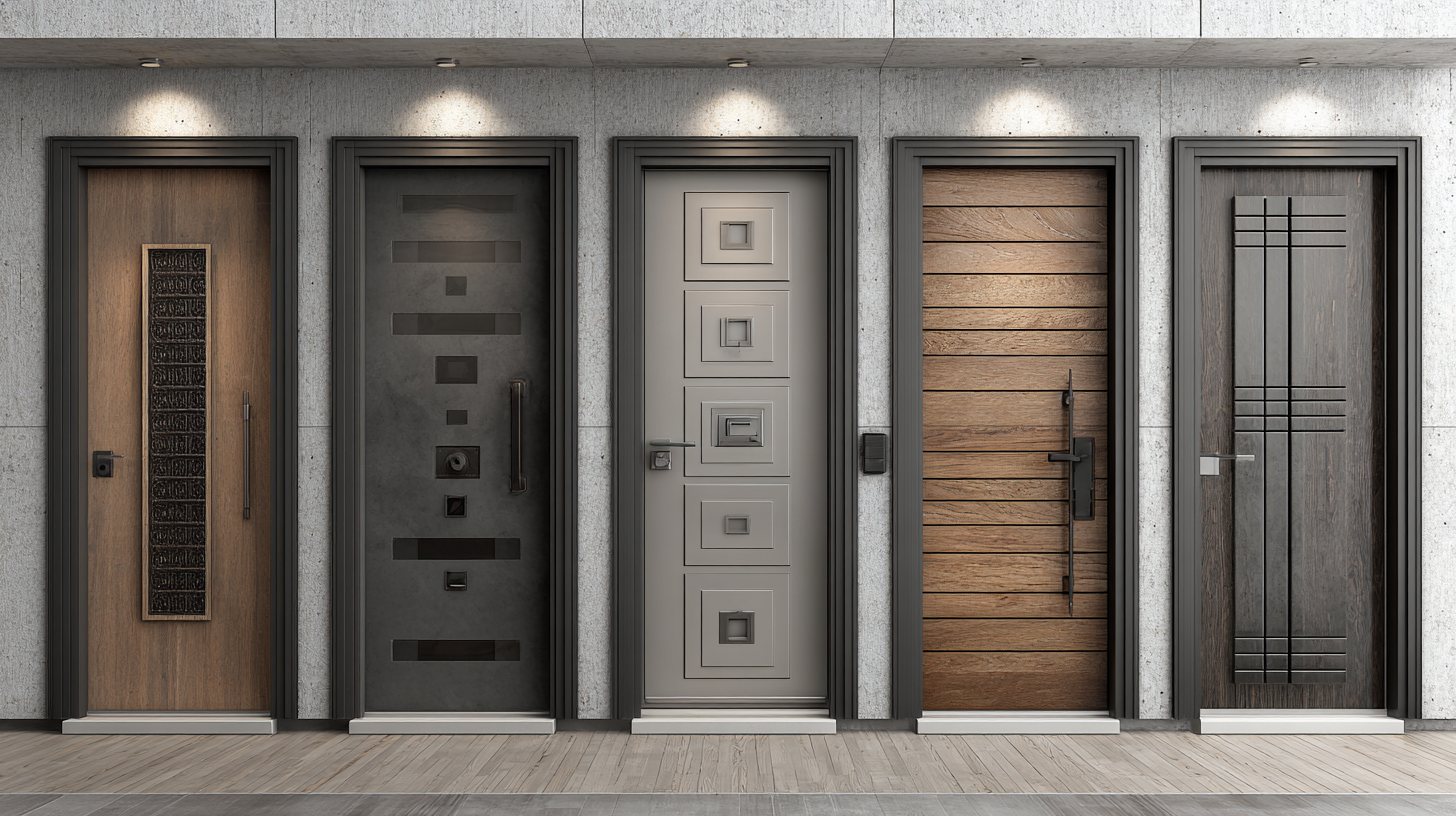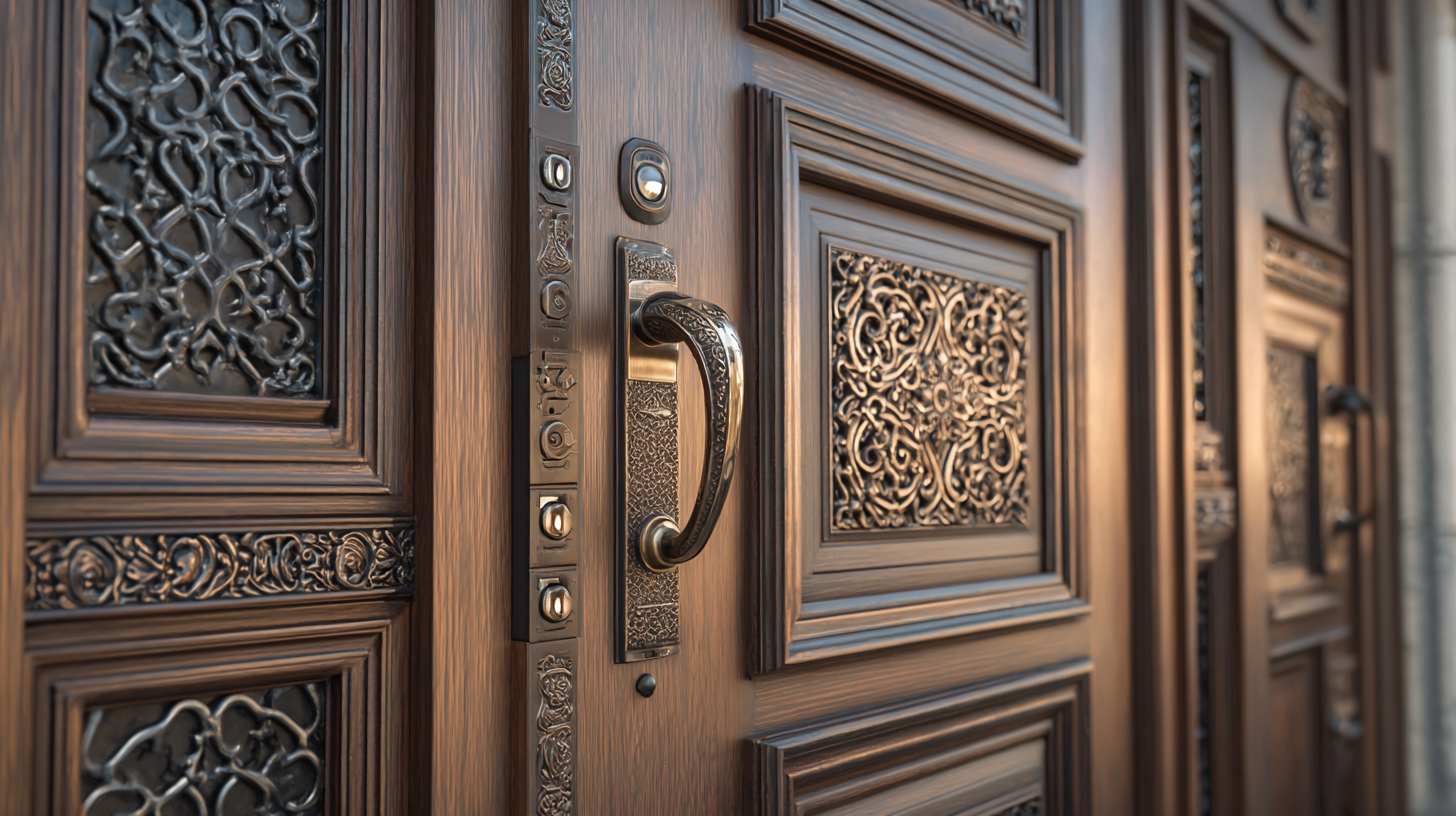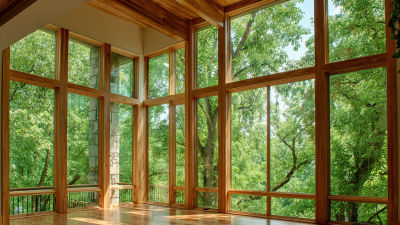Enhancing Home Safety: The Ultimate Guide to Choosing the Right Doors for Security
 In the pursuit of enhanced home safety, the selection of the right
"doors for security" becomes paramount. According to the
FBI's Uniform Crime Reporting Program, a burglary occurs
every 25.7 seconds in the United States, highlighting the need for effective security measures.
Furthermore, a study by the Bureau of Justice Statistics reveals that
67% of break-ins involve forced entries through doors,
underscoring the critical role doors play in home protection.
Choosing robust, reliable doors not only deters intruders but also
provides homeowners with peace of mind. As advanced materials
and technology evolve, understanding the specific features and types of doors
that offer optimal security can significantly reduce the risk of home invasions,
making this guide an essential resource for anyone looking to
protect their sanctuary effectively.
In the pursuit of enhanced home safety, the selection of the right
"doors for security" becomes paramount. According to the
FBI's Uniform Crime Reporting Program, a burglary occurs
every 25.7 seconds in the United States, highlighting the need for effective security measures.
Furthermore, a study by the Bureau of Justice Statistics reveals that
67% of break-ins involve forced entries through doors,
underscoring the critical role doors play in home protection.
Choosing robust, reliable doors not only deters intruders but also
provides homeowners with peace of mind. As advanced materials
and technology evolve, understanding the specific features and types of doors
that offer optimal security can significantly reduce the risk of home invasions,
making this guide an essential resource for anyone looking to
protect their sanctuary effectively.
Table of Contents
[Hide]
Understanding Door Security Ratings: What You Need to Know
When it comes to securing your home, understanding door security ratings is essential. These ratings provide consumers with a clear indication of a door's ability to withstand unauthorized entry. The American National Standards Institute (ANSI) offers guidelines that categorize doors based on their resistance to forced entry. For instance, doors rated with a Grade 1 designation are excellent for exterior use, boasting extensive testing for durability and security. In contrast, Grade 2 doors offer moderate security for entryways while still providing an adequate level of protection.
In addition to the ANSI ratings, homeowners should also consider the materials and construction of their doors. Solid wood or metal doors typically provide better security compared to hollow core or lightweight materials. Moreover, reinforcing the door frame and ensuring high-quality locks can significantly enhance overall safety. When selecting a door, it’s critical to look for features like a robust deadbolt and a strike plate that is well anchored to the frame. By understanding these security ratings and factors, homeowners can make informed decisions to enhance their home’s safety effectively.

The Role of Material Strength in Enhancing Home Door Security
When it comes to enhancing home security, the strength of your doors plays a crucial role in protecting your property. The materials used in door construction significantly impact their ability to withstand forced entry.
Solid wood, fiberglass, and steel doors are among the most recommended choices for homeowners looking to fortify their entry points.
Solid wood doors offer natural strength and durability, while fiberglass doors are lightweight yet resilient against harsh weather and impacts. Steel doors, on the other hand, provide exceptional security due to their robust composition, making them highly resistant to attempts at unauthorized entry.
In addition to material strength, it's essential to consider door frames and hardware as part of the overall security picture. A strong door can be compromised with weak frames or inadequate locks.
Reinforced door frames and high-quality deadbolts enhance the effectiveness of any door, regardless of the material.
The combination of a secure door and sturdy hardware creates a formidable barrier against intruders, ensuring that your home remains a safe haven.
Therefore, investing in high-quality materials and hardware is vital in any home security strategy.
Smart Technology: Integrating Security Features in Your Doors
In today's environment, the integration of smart technology into home security has become essential for enhancing safety. When choosing doors, it is important to consider options that come pre-equipped with advanced security features. Smart locks, for instance, provide homeowners with the ability to control access remotely through their smartphones. This allows for real-time monitoring and management of who enters and exits the home, offering peace of mind even when you're away.
Additionally, doors with integrated surveillance systems can greatly improve overall security. Many modern doors are designed to accommodate security cameras or intercom systems, allowing homeowners to see who is at the door before granting access. This not only deters potential intruders but also enhances convenience, as one can communicate with visitors from anywhere in the house. By selecting doors that feature these smart technologies, homeowners can significantly elevate their home security and create a safer living environment.
Enhancing Home Safety: Security Features in Doors
This chart illustrates the percentage of homeowners that prefer various security features in their doors, highlighting the increasing preference for smart technology integration in home safety measures.
Cost vs. Protection: Analyzing the Value of High-Security Doors
When considering home security, the choice of doors is pivotal in enhancing safety. High-security doors, while often more expensive, offer substantial protection against break-ins and unauthorized access. The investment in such doors is comparable to the value one places on the safety of their loved ones and belongings. In the face of rising crime rates, analyzing the cost versus protection provided by these doors becomes essential for homeowners.
The latest market research indicates a growing demand for high-security doors globally, reflecting a shift towards prioritizing safety features in residential properties. As consumers become more aware of the risks and potential threats to home security, they are increasingly willing to invest in durable, reliable options. This trend highlights the significance of evaluating the long-term benefits of high-security doors, as they often provide not only immediate peace of mind but also potential savings in insurance premiums and reduced risk of theft-related losses.
Trends in Home Safety: Key Statistics on Door Break-Ins and Prevention
When it comes to home safety, securing your doors is a critical component in preventing break-ins. Recent statistics underscore the alarming frequency of door-related break-ins, with many thieves exploiting weak or outdated door security. This makes investing in the right doors and security features more vital than ever. Knowing that a reinforced door can deter 80% of attempted break-ins, homeowners should consider options like solid wood or metal doors, which offer greater resistance against forced entry.

Tips for Enhancing Door Security:
- Upgrade Locks: Invest in high-quality deadbolts and multipoint locking systems. These provide added security and can significantly reduce the chance of unauthorized access.
- Use Security Bars: Installing security bars can be an effective deterrent, reinforcing your door against both prying and kicking attempts. They can act as a visible barrier to potential intruders.
- Smart Home Integration: Consider a smart doorbell camera or security system. Many modern systems allow you to monitor your doors remotely, providing peace of mind when you’re away from home.
In light of the current trends, it is clear that proactive measures in door security can greatly enhance your home protection strategy. Consider these enhancements to create a safer environment for you and your loved ones.
Related Posts
-

Ultimate Guide to Selecting the Best Insulated Windows for Your Global Sourcing Needs
-

Unlocking Home Aesthetics: The Impact of Style Doors on Property Value and Energy Efficiency
-

Navigating Challenges with Sourcing French Windows for Global Buyers
-

7 Innovative Style Doors Transforming Modern Interiors in 2023
-

How to Enhance Your Home with Large Windows for Natural Light
-

5 Essential Tips for Choosing the Perfect French Windows for Your Home